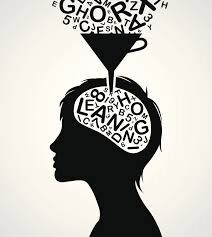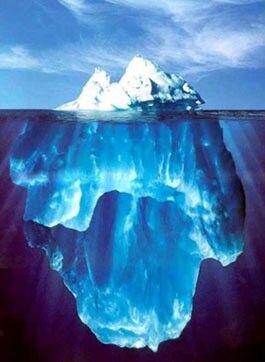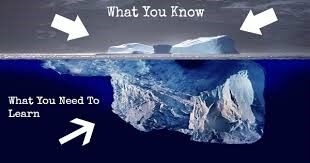Psychology
The Neuropsychology of Media & Learning Psychology Explained
Neurons that fire together wire together
Posted June 29, 2020 Reviewed by Hara Estroff Marano
Learning Psychology Series No. 52

Learning is a relatively permanent change in behavior as a result of experience. Understanding the physiology and the neurotechnology of learning is a contribution of neuroscience. Psychology helps us grasp the true nature of personal development and transformation that results from every learning experience. Technology innovations continuously bring changes in teaching and learning.
These forces converge in the brain and in the mind during the experience of education and learning. Today, the drama surrounding COVID-19 is measurably accelerating such changes. This article offers a snapshot of the changes and new developments and translates them into a positive learning examination to share with researchers, teachers, students, and future leaders studying psychology.
Zooming into the future
ZOOMinars are becoming common in education as a teaching-learning tool. Their use in education has accelerated because of the unexpected and significant behavioral modifications COVID-19 now demands from our schools and colleges. To explore the newer approaches, I recently interviewed several experts including:
- Adam Leipzig, as MediaU.com CEO leading the offering of new types of programs in education and entertainment (Los Angeles)
- Bob Wright, Ed.D., CEO, and Michael Zwell, Ph.D., Chancellor, of Wright Graduate University for the Realization of Human Potential (Chicago)
- Kumari Patricia Younce, Chair of the Education Department at Goddard College. (Vermont)
We examined neuropsychology, media psychology, and learning psychology, as we focused on the importance of understanding the granular mechanics that enable the experiences that translate learning in the brain into personal experiences and memories registered in the mind.
Applying Hebb’s rule
In 1949, Donald Hebb offered a straightforward physiological metaphor describing the learning connections in a neural network (Hebb, 1949). Hebb’s rule says that, "Neurons in the brain that fire together, wire together," forming a neural communications network. The iconic American educator John Dewey held that education is more than preparation for life (Dewey, 1910). He opined that, “Education is life itself.” The American Psychological Association defines psychology as the study of the mind and human behavior (A.P.A., 2020).

What you know and what you need to learn
The actual physical manifestations in learning occur through a neural network of dendrites and synapses in the brain, manifesting learning experiences that register in the mind. Each experience is comprised of a sensory response, decoded through the mind’s interpretation of symbols, and translated through language into understanding of the experience in the mind. Learning, therefore, is a relatively permanent and memorable change in behavior, as a result of experience.
Synesthesia, semiotics and semantics
Synesthesia is the phenomenon of experiencing sensations in multiple ways simultaneously.. Human senses include hearing, seeing, feeling/touching, smelling, and tasting. Translating and remembering the physical sensations shape behavior. Physically, each sense is separate. We hear with ears; see with our eyes, smell, touch, feel, and taste through our skin. Perception, including sensory couplings, happen to everyone all the time.
Richard Cytowic, M.D., is the expert who returned synesthesia to mainstream science after decades of being ignored. Through research, Cytowic validated and pointed out that everyone experiences some level of synesthesia (Cytowic, 1989). Synesthesia involves the physical and perceptual interpretations of the senses. One of synesthesia’s most frequent manifestations is seeing days of the week as colored, followed by sensing letters, numerals, and punctuation marks in different hues even when printed in black.
Now, through the fMRI (functional magnetic resonance imaging), how perception occurs in the brain is being measured and documented. We now know more about learning, the effects of media, and psychology than ever before. My learning model is expressed through the 3S model—Synesthesia, Semiotics, and Semantics—that explains how stimuli combine into perceptions in the brain and register in memory as an experience in the mind, validating Cytowic’s findings that everyone experiences a level of synesthesia as a normal function of living.

Advances in digital signal processing have now become human-centered and screen deep. We are watching, listening, and learning and engaging through our computers, iPads, iPhones, Apple Watch-type wrist devices, cable and satellite TV and webinars, and all forms of social media (Luskin, 2016). Advances in science, learning and media psychology, technology, and new pressures from the battle against COVID-19 continue to permanently change and enhance the world of education and learning. Understanding current advances as they apply to learning psychology is critical for teachers, counselors, administrators, staff, and students at all levels of education.
The new virtual residency
As one example, working with Goddard College psychology professor Kumari Patricia Younce, I am sharing these ideas with students in a new ZOOMinar virtual residency as part of the Goddard College psychology program. This approach represents a striking change in many ways, as we (1) shift from a physical to a virtual residency, (2) explore learning psychology and its elements, and (3) actively share the nature of learning psychology with a class of future teachers, counselors, administrators, and other leaders in ways that will be helpful to them and their students in years ahead.
Knowledge in media, learning, educational, neuropsychology, and technology, coupled with new ways of sharing knowledge anywhere, anytime, is increasing. We are not alone together. We are engaging together in new and empowering ways as we continue to learn. Advances in Learning psychology and in media psychology as cognate fields within educational psychology are at the center of future opportunity.
In a nutshell, learning translates through the brain’s neural network into images, experience, and language in the mind. If we believe that John Dewey was right that education is life, then one of our most valuable efforts must be in continuously improving the art and science of transformational living.
Special thanks: Toni Luskin, Ph.D., editor; Adam Leipzig, CEO, MediaU.; Kumari Patricia Younce, MFA, Chair of Education, Goddard College; and Robert Wright, Ed.D., CEO & Michael Zwell, Ph.D., Chancellor, Wright Graduate University for the Realization of Human Potential for your insights.
Author: Bernie@LuskinInternational.com
References
A.P.A., American Psychological Association. (2020). Definition of Psychology (Public Information). Available from Google apa.org Retrieved June 26, 2020, from American Psychological Association
Cytowic, R.E. (1989). Synesthesia (1st ed. Vol. 1). Boston: MIT Press.
Dewey, J. (1910). How We Think (1st ed.). New York: D.C. Heath & Co.
Hebb, D.O. (1949). The Organization of Behavior, A Neuro-psychological Theory (1st ed.). New York Wiley.
Luskin, B.J. (2016). Explaining Media Psychology: A specialty that's time has come. [Media Psychology]. Psychology Today, 24(Luskin Learning Psychology).
Luskin, B.J. (2019). Synesthesia, Semiotics, Semantics and How We Learn. [Media Psychology]. Psychology Today, 46(Luskin Learning Psychology).




